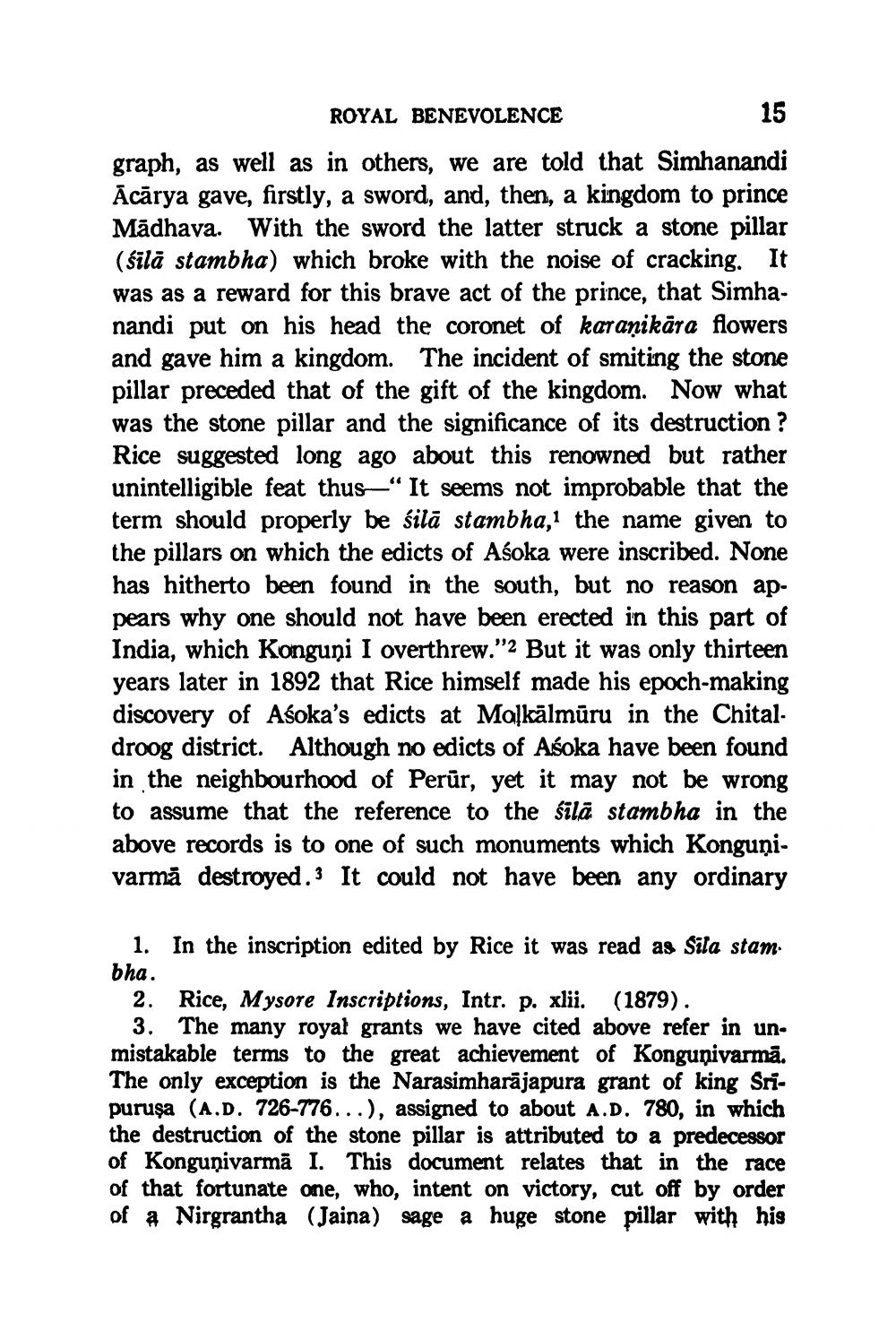________________
ROYAL BENEVOLENCE
15 graph, as well as in others, we are told that Simhanandi Ācārya gave, firstly, a sword, and, then, a kingdom to prince Madhava. With the sword the latter struck a stone pillar (šīlā stambha) which broke with the noise of cracking. It was as a reward for this brave act of the prince, that Simhanandi put on his head the coronet of karanikära flowers and gave him a kingdom. The incident of smiting the stone pillar preceded that of the gift of the kingdom. Now what was the stone pillar and the significance of its destruction ? Rice suggested long ago about this renowned but rather unintelligible feat thus—“ It seems not improbable that the term should properly be śilā stambha, the name given to the pillars on which the edicts of Asoka were inscribed. None has hitherto been found in the south, but no reason appears why one should not have been erected in this part of India, which Konguņi I overthrew.”2 But it was only thirteen years later in 1892 that Rice himself made his epoch-making discovery of Aoka's edicts at Malkālmūru in the Chitaldroog district. Although no edicts of Asoka have been found in the neighbourhood of Perür, yet it may not be wrong to assume that the reference to the silā stambha in the above records is to one of such monuments which Kongunivarmă destroyed. It could not have been any ordinary
1. In the inscription edited by Rice it was read as Sila stam. bha.
2. Rice, Mysore Inscriptions, Intr. p. xlii. (1879).
3. The many royal grants we have cited above refer in unmistakable terms to the great achievement of Kongunivarma. The only exception is the Narasimharajapura grant of king Sripuruşa (A.D. 726-776...), assigned to about A.D. 780, in which the destruction of the stone pillar is attributed to a predecessor of Konguņivarmā I. This document relates that in the race of that fortunate one, who, intent on victory, cut off by order of a Nirgrantha (Jaina) sage a huge stone pillar with his




